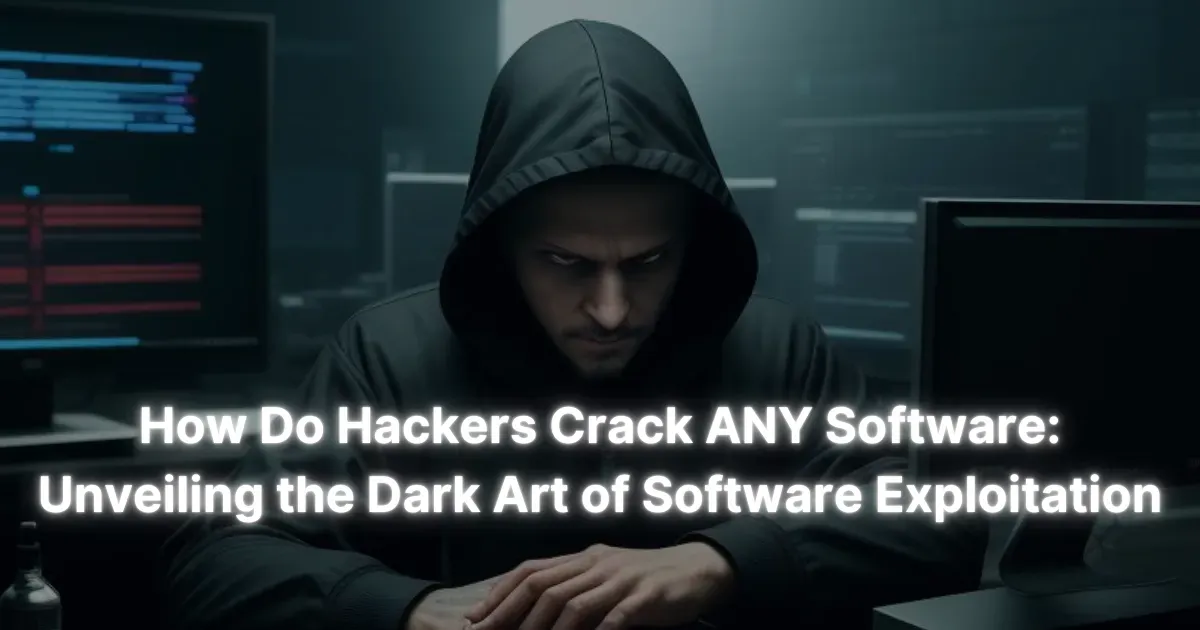In the ever-evolving landscape of cybersecurity, understanding the methods employed by hackers to crack software is crucial for both developers and users. This blog post will delve into the techniques used by hackers to bypass software protection mechanisms and gain unauthorized access. Let's explore the world of software cracking and learn how to protect ourselves against these threats.
The Basics of Software Cracking
Software cracking is the process of modifying software to remove or disable features that are considered undesirable by the person cracking the software, especially copy protection features or software protection dongles. Hackers employ various techniques to achieve this, often exploiting vulnerabilities in the software's design or implementation.
Common Techniques Used by Hackers
1. Reverse Engineering
A fundamental technique that hackers use to comprehend how a piece of software functions is reverse engineering. This process involves:
- Disassembling the software to analyze its machine code
- Studying the program's structure and algorithms
- Identifying potential weaknesses in the code
By reverse engineering, hackers can gain insights into the software's protection mechanisms and find ways to bypass them.
2. Debugging and Code Analysis
Hackers often use debugging tools to analyze the software's behavior during runtime. This allows them to:
- Identify key functions and routines
- Locate and modify critical code sections
- Bypass security checks and validation routines
Advanced debugging techniques help hackers understand the software's inner workings and find potential exploit points.
3. Patching and Binary Modification
Once vulnerabilities are identified, hackers may modify the software's binary code to:
- Remove license checks or copy protection mechanisms
- Alter program behavior to bypass security measures
- Insert malicious code or backdoors
This technique often involves replacing specific instructions or data within the executable file.
4. Key Generation (KeyGen) Development
For software that relies on license keys or serial numbers, hackers may create key generation tools. These KeyGens:
- Analyze the algorithm used for key validation
- Generate valid license keys or serial numbers
- Allow unauthorized users to activate the software
Creating a KeyGen requires a deep understanding of the software's licensing mechanism and cryptographic algorithms.
Advanced Cracking Techniques
1. Memory Manipulation
Some hackers use memory manipulation techniques to:
- Modify values in the software's memory during runtime
- Bypass in-memory checks and validations
- Alter program behavior without modifying the original executable
This approach can be particularly effective against software with runtime protection mechanisms.
2. API Hooking and DLL Injection
Advanced hackers may employ API hooking and DLL injection to:
- Intercept and modify system or library calls
- Inject custom code into the running process
- Bypass security measures implemented at the operating system level
These techniques allow hackers to manipulate the software's behavior at a deeper level.
The Ethics and Legality of Software Cracking
It's important to note that software cracking is often illegal and unethical. While some argue that it can be used for legitimate purposes like security research or preservation of abandoned software, in most cases, it violates copyright laws and software licenses.
Protecting Your Software from Crackers
For software developers, implementing robust protection mechanisms is crucial. Some effective strategies include:
- Obfuscation: Make your code harder to understand and reverse engineer.
- Anti-debugging techniques: Implement measures to detect and prevent debugging attempts.
- Encryption: Protect sensitive parts of your code and data with strong encryption.
- Online activation: Require periodic online checks to validate licenses.
- Hardware-based protection: Use hardware dongles or trusted platform modules (TPMs) for added security.
Staying Safe as a User
As a software user, you can protect yourself by:
- Only download software from official sources
- Keeping your software up-to-date with the latest security patches
- Using strong, unique passwords for software accounts
- Being cautious of cracked software, which may contain malware
- Supporting developers by purchasing legitimate licenses
Conclusion
Understanding how hackers crack software is essential for both developers and users in today's digital landscape. While the techniques used by hackers are constantly evolving, staying informed, and implementing robust security measures can help protect against unauthorized access and software piracy.
Remember, the best defense against software cracking is a combination of technical measures and ethical practices. By supporting legitimate software development and staying vigilant against potential threats, we can contribute to a safer and more secure digital ecosystem.
To learn more about cybersecurity and software protection, explore our other articles on doreturn.in. Stay informed, stay secure!



